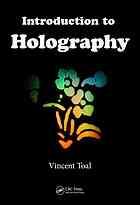

Most ebook files are in PDF format, so you can easily read them using various software such as Foxit Reader or directly on the Google Chrome browser.
Some ebook files are released by publishers in other formats such as .awz, .mobi, .epub, .fb2, etc. You may need to install specific software to read these formats on mobile/PC, such as Calibre.
Please read the tutorial at this link: https://ebookbell.com/faq
We offer FREE conversion to the popular formats you request; however, this may take some time. Therefore, right after payment, please email us, and we will try to provide the service as quickly as possible.
For some exceptional file formats or broken links (if any), please refrain from opening any disputes. Instead, email us first, and we will try to assist within a maximum of 6 hours.
EbookBell Team

0.0
0 reviewsOver the course of its 60-year history, holography has enabled new insights into the nature of light and has contributed to innovative applications, including many unrelated to optics. Introduction to Holography explains how to use holographic techniques to solve specific problems in a variety of fields. The text focuses on the state of development of existing and emerging holographic applications. Numerical problems are provided at the end of each chapter.
After a review of essential optics, the book presents basic holographic principles. It introduces the theory of thick holograms, along with a less demanding and more insightful path to important results based on the work of Jacques Ludman. Examining the use of holography in practice, the author then describes the conditions for successful holography in the laboratory, including various lasers commonly used for holography. He also discusses recording materials and their key holographic characteristics. The final portion of the book deals with applications of holography, including imaging, holographic interferometry, holographic optical elements, and data storage. The text also explores digital and computer-generated holography, light-in-flight and first-arriving light techniques and their applications, polarization holography, and holography for sensing applications.
Since its invention in 1948, holography has evolved into a mature technology with a wide range of applications. This practical guide to the field offers a comprehensive survey of contemporary holographic techniques and applications.